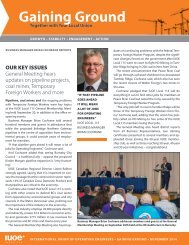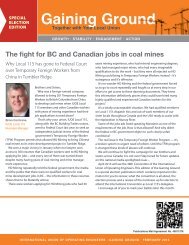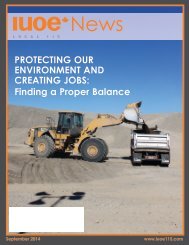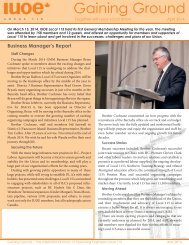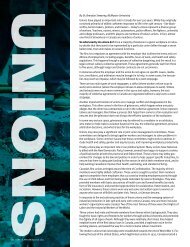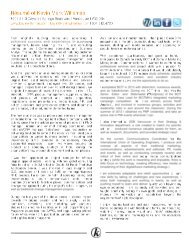OE News Special Edition June 2014
OE News Special Edition June 2014
OE News Special Edition June 2014
- No tags were found...
You also want an ePaper? Increase the reach of your titles
YUMPU automatically turns print PDFs into web optimized ePapers that Google loves.
Administrator’s ReportBecause we are unable to invest future contributions until we receive them and because wecannot predict what interest rate levels will be when we do receive the contributions, it is notpossible to fully protect future service benefit levels against the possibility of lower interestrates. When we adopted our current investment strategy we were advised and understood thestrategy might not be able to protect future service benefit levels in a dropping interest rateenvironment, particularly where long term interest rates stay at low levels for a long period oftime as they have done recently.When most of us joined the Plan, we typically expected investment returns of 7% per annum,and this was the basis used to establish pension benefit levels. Higher long-term investmentreturns would provide for higher future benefits, all other things being equal. With that beingsaid, over the last decade the long term interest rates have fallen steadily. This means that thecost to finance benefits earned in the future has risen while the contributions made today andin the future will earn lower rates of return than expected when the benefit levels were established.The only way to offset this increased cost is to continually monitor and if necessaryamend the level of future benefits to reflect the lower interest rate environment we are currentlyliving in.To illustrate the impact of future investment returns falling from 7% per annum to 4.5% perannum, consider an active plan member, with a contribution rate of $2.45 per hour with 1,600hours of annual contributions accruing a monthly pension benefit of $70.56 per year of membership.The cost of this pension at 7% is $1.95 per hour vs. $3.12 per hour at 4.5%.You can see that if investment returns are only 4.5% per annum, the pension benefit that canbe provided is 37% lower than if the investment returns are 7% per annum. For the same pensionbenefit rate to be provided when only 4.5% per annum returns are available, contributionrates would have to be increased by 60%. To put this more simply, if we were starting a newpension plan today with the same level of contributions, we could not support the same levelof benefit for the future. A simple rule of thumb for determining the reduction needed in benefitlevels is this: for every 1% drop in long term interest rates, the required reduction in benefitlevels would be 20%. This situation affects all pension plans in our current economicenvironment.The purpose of this communication is to alert the membership that if long term interest ratesstay at present levels or continue to fall it may be necessary to adjust future service benefitslevels for accruing pension members.It is also important to note that the long-term health of our pension plan continues to dependon a strong membership, and in particular on the recruitment of new members. As the BusinessManager notes elsewhere in this report, all members have a responsibility to contribute torecruitment – and this is the best way you can support your Trustees’ ongoing work to ensurethe stability of the pension plan you rely on.<strong>Special</strong> <strong>Edition</strong> Fall <strong>2014</strong> <strong>News</strong> 11







